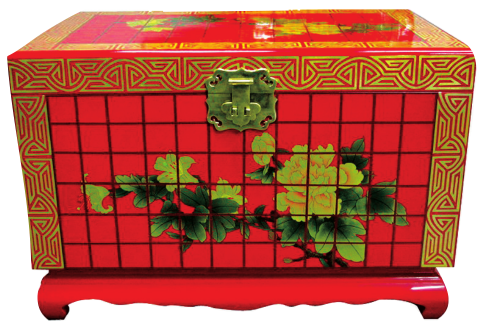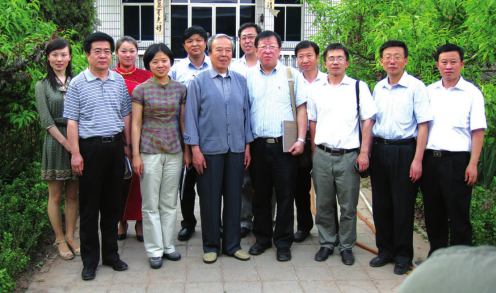 |
| A Pingyao lacquerware trunk. |
Park officials plan to build an experience center for visitors to see and experience the process of lacquerware making. It will also be equipped with catering and accommodation facilities that boast of eco-friendly lacquer tableware.
The park is also nurturing a lacquer tree forest to provide natural lacquer, the essential material in traditional Pingyao lacquerware.
The history of Pingyao lacquer art dates back more than 1,200 years to the Tang Dynasty (AD 618-907). As Pingyao became the national financial center in the Qing Dynasty (1644-1911), Pingyao lacquer art, fueled by the huge demand from wealthy local bankers, reached its peak.
Pingyao lacquer art is mostly known for its jade-like luster that comes from repeated hand polishing. When the pine wood is manufactured into the products, most of which are furniture, folding screens and tableware, it is wrapped up in linen and covered with a mixture of parget and pork blood for anti-corrosion effects. It is then polished with sandpaper and again covered with the mixture. The process is repeated several times in order to make a surface smooth enough for later procedures.
To paint on such a refined surface, artists have to train for at least four years. They draw with lynx hair brushes and outline the painting with gold powder. The painting is sometimes studded with ivory and jade for a more vivid effect.
When the painting is finished, it is covered with varnish and hand-polished by young women who are believed to have the smoothest palms. These women smear their palms with sesame oil and brick dust and polish the surface over and over until a sheen appears.
A piece of lacquerware could take months or even years to finish. Xue's representative work, a folding screen that features hundreds of playing cats, took him three years to conceive and accomplish.
 |
| Lacquer art master and director of Tangdu Lacquer Art Museum Xue Shengjin (sixth from the left) with his students and colleagues. |
Lacquerware can last for thousands of years as it is waterproof and fireproof. Today, traditional lacquerware can sell for tens of thousands of yuan to millions, depending on its size and craftsmanship.
In the early 1990s, as China developed a market economy, the traditional lacquer artistry was severely challenged by the rise of modern chemical lacquer. Intimidated by the high costs of natural lacquer and the complicated process of traditional lacquer making, producers began to use modern lacquer to cut costs.
"Sometimes the craftsmanship gets so coarse and the price gets so cheap that it is no longer what we call Pingyao lacquerware," Xue says.
